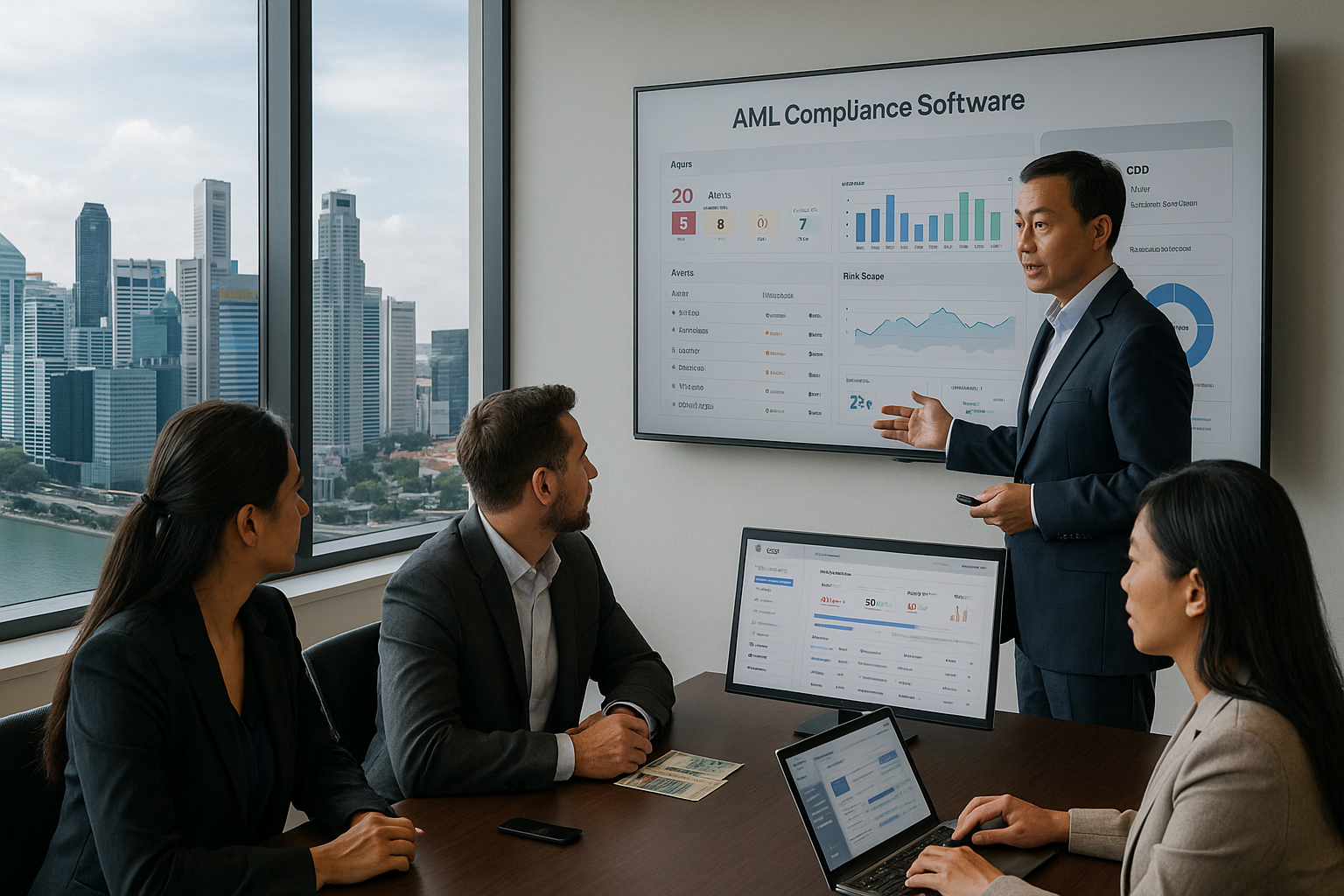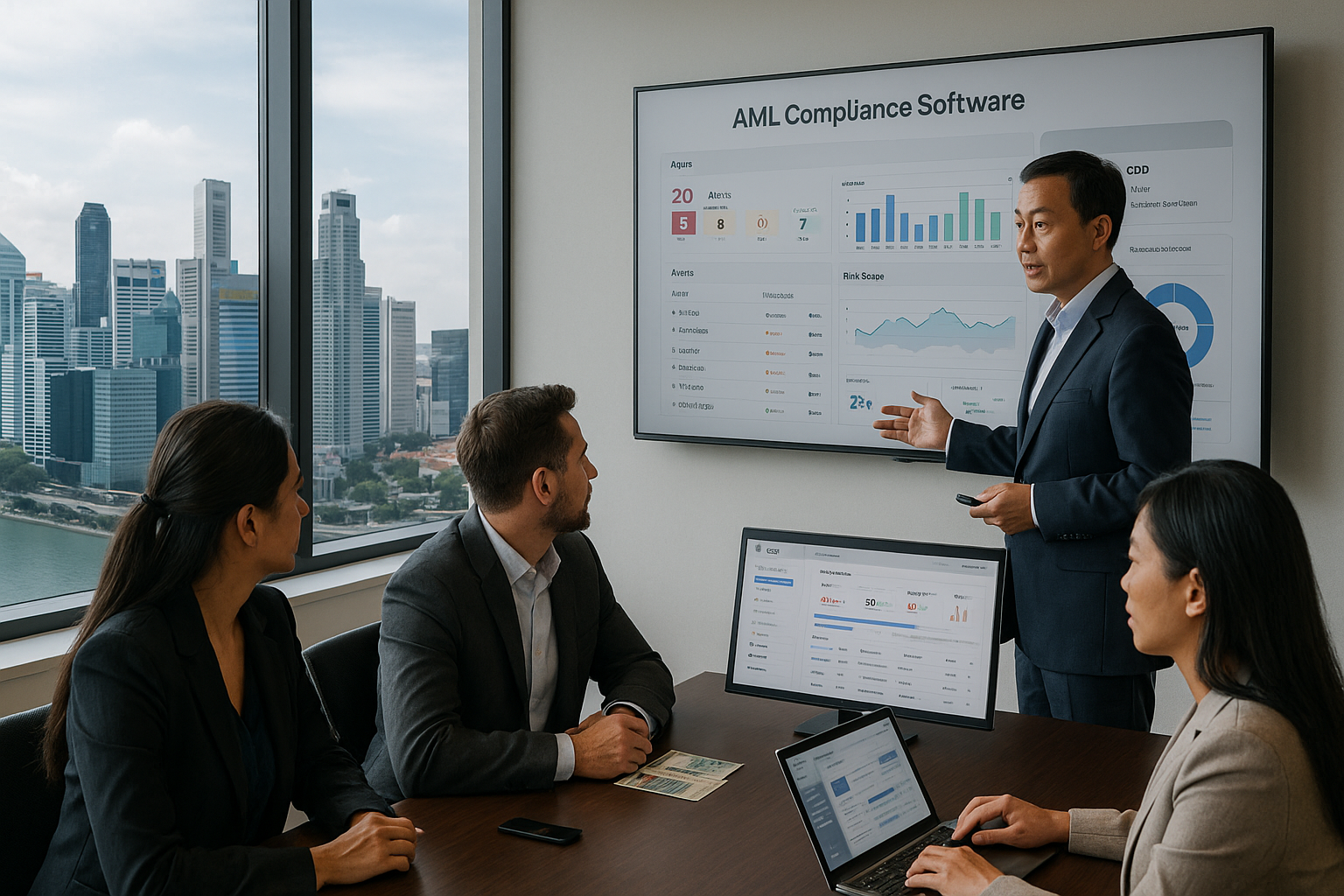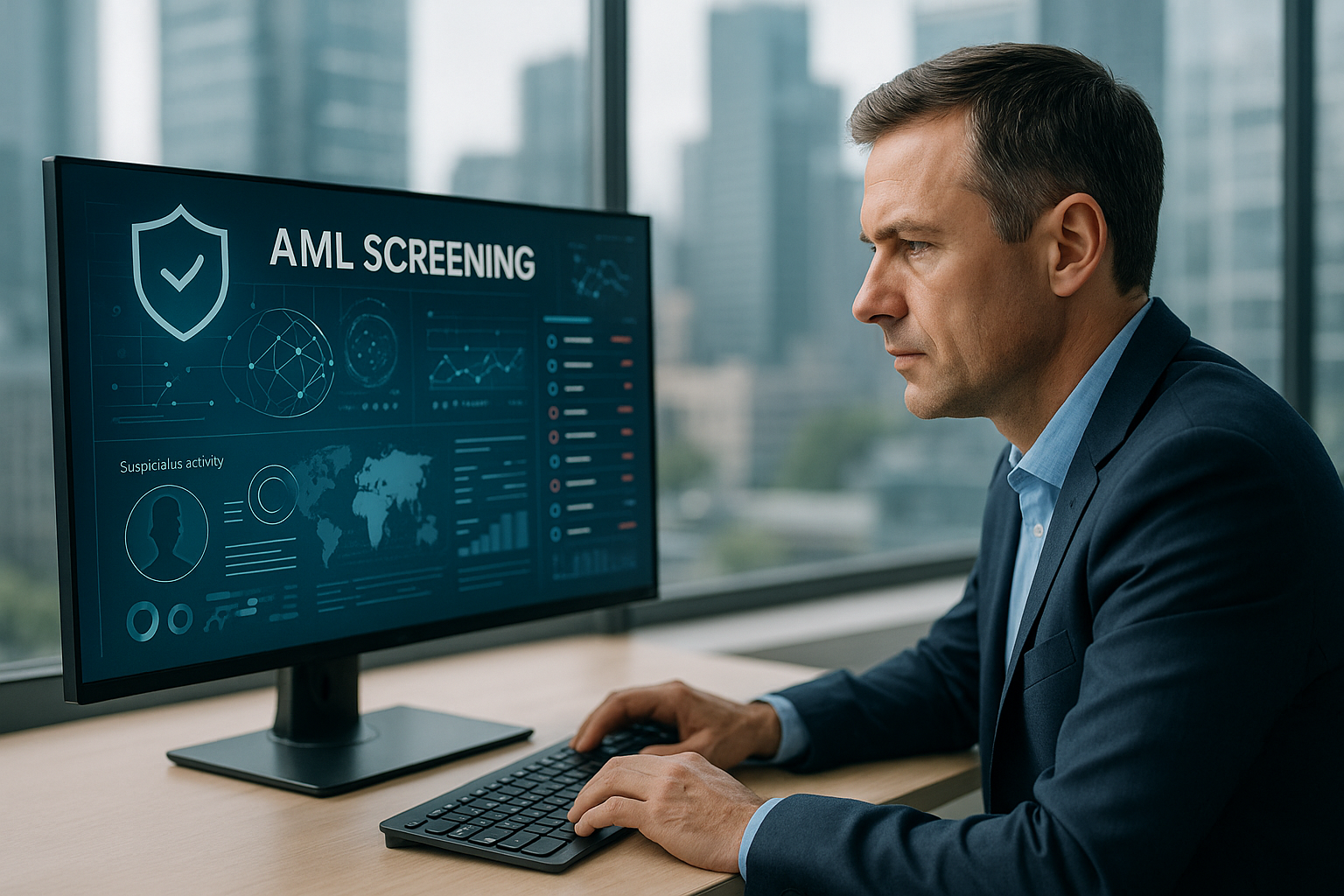BSA AML Monitoring Software: Building Malaysia’s Next Layer of Financial Defence
.svg)
Global AML standards began with the Bank Secrecy Act. Today, they define how Malaysia builds trust in its financial system.
Malaysia’s Growing AML Challenge
Malaysia’s financial ecosystem is becoming more digital, interconnected, and fast-moving. From instant payments and QR-based transfers to cross-border remittances, financial institutions are managing enormous transaction volumes every second.
While this digital transformation fuels growth, it has also opened new pathways for financial crime. Money mule networks, investment scams, and cross-border laundering schemes are becoming more sophisticated. Bank Negara Malaysia (BNM) is responding by enforcing tighter compliance rules aligned with Financial Action Task Force (FATF) standards.
Yet, many financial institutions continue to rely on outdated monitoring systems that cannot detect evolving typologies or adapt to real-time risks. The answer lies in adopting BSA AML monitoring software that blends global best practices with regional relevance.

Understanding the BSA: The Foundation of Modern AML Compliance
The Bank Secrecy Act (BSA), enacted in the United States in 1970, is considered the cornerstone of global anti-money laundering (AML) efforts. It requires financial institutions to assist government agencies in detecting and preventing money laundering by:
- Keeping records of cash purchases of negotiable instruments
- Filing reports for transactions above set thresholds
- Reporting suspicious activities that might indicate laundering, fraud, or terrorist financing
Over the decades, BSA principles have evolved to form the foundation of international AML frameworks, influencing both FATF recommendations and national regulations worldwide.
While Malaysia operates under its own Anti-Money Laundering, Anti-Terrorism Financing and Proceeds of Unlawful Activities Act (AMLA), the core principles of the BSA— transparency, reporting, and risk-based monitoring— are deeply embedded in BNM’s compliance expectations.
What is BSA AML Monitoring Software?
BSA AML monitoring software refers to technology solutions designed to automate the detection, investigation, and reporting of suspicious financial activity.
These platforms are built to:
- Monitor transactions in real time to detect unusual patterns or anomalies
- Generate and prioritise alerts based on risk scoring models
- Support Suspicious Transaction Report (STR) filing with comprehensive documentation
- Ensure audit readiness through traceable decision-making and reporting history
In essence, this software embodies the operational heart of an AML program, empowering financial institutions to comply efficiently while staying one step ahead of criminals.
Lessons from the BSA Framework for Malaysian Institutions
The Bank Secrecy Act’s enduring success lies not in its age, but in its adaptability. Several lessons stand out for Malaysian financial institutions aiming to enhance their AML monitoring frameworks.
1. Embrace Risk-Based Monitoring
BSA compliance relies on understanding customer profiles, transaction patterns, and business risks. Malaysian banks must similarly tailor monitoring systems to focus on high-risk customers and jurisdictions.
2. Strengthen Suspicious Activity Reporting
Accurate and timely reporting is essential. Advanced software helps generate STRs supported by explainable data analytics and comprehensive case histories.
3. Encourage Collaboration and Data Sharing
BSA’s influence led to better information sharing between institutions and regulators. Malaysia’s AML community can benefit from the same collaboration through initiatives like Tookitaki’s AFC Ecosystem, where insights are shared anonymously across members.
4. Ensure Explainability and Transparency
Regulators expect every AML decision to be traceable. Explainable AI within AML monitoring software ensures that Malaysian compliance teams can justify every alert with clarity.
Challenges Facing Malaysian Financial Institutions
Despite progress, banks and fintechs across Malaysia still face major challenges in achieving BSA-grade AML compliance.
Fragmented Systems
Many institutions run separate platforms for fraud detection, AML monitoring, and transaction screening. This fragmentation limits visibility across customer touchpoints.
Siloed Data
Without integrated data, monitoring systems cannot detect complex layering or cross-channel laundering schemes.
False Positives and Alert Fatigue
Legacy systems often rely on rigid rule sets that generate thousands of unnecessary alerts, diverting resources from genuine threats.
Escalating Compliance Costs
Manual investigations, disjointed workflows, and frequent regulatory audits increase operational costs.
Evolving Crime Typologies
Criminals are now exploiting real-time payment channels, cryptocurrency gateways, and trade-based laundering methods, which static systems cannot detect.
How Advanced BSA AML Monitoring Software Solves These Gaps
BSA AML monitoring software introduces automation, intelligence, and adaptability.
1. Real-Time Monitoring
Modern solutions analyse transactions as they happen, identifying suspicious behaviour before criminals can move funds further.
2. AI and Machine Learning
Machine learning models continuously learn from data, adapting to new money laundering typologies and reducing false positives.
3. Automated Workflows
Automation streamlines alert triage, case management, and reporting, ensuring faster and more consistent responses.
4. Scalable Infrastructure
BSA-grade software supports millions of daily transactions while maintaining performance and accuracy.
5. Regulator Alignment
Explainable AI and audit-ready reporting ensure full transparency with regulators such as BNM and regional counterparts.
By applying these principles, Malaysian banks can achieve compliance standards that meet and even exceed international expectations.

Tookitaki’s FinCense: BSA-Grade AML Monitoring for Malaysia
Tookitaki’s FinCense represents the next generation of BSA-grade AML monitoring technology designed for the realities of Malaysia’s financial sector. It combines AI innovation with a deep understanding of regional compliance landscapes.
Agentic AI Workflows
FinCense leverages Agentic AI, where intelligent agents automate investigation workflows, triage alerts, and generate case summaries in natural language. This drastically reduces investigation time and ensures consistency across teams.
Federated Learning with the AFC Ecosystem
Through the AFC Ecosystem, FinCense connects financial institutions, regulators, and compliance experts in a privacy-preserving framework. This collaborative approach enables shared learning without compromising data security.
For Malaysia, this means gaining early detection capabilities for laundering typologies first observed in neighbouring ASEAN markets.
Explainable AI and Audit Readiness
FinCense’s AI is fully transparent, providing a clear rationale for every flagged transaction. Regulators can trace decisions end-to-end, improving trust and audit efficiency.
Unified AML and Fraud Coverage
Instead of managing multiple disjointed systems, FinCense delivers a single, integrated platform for transaction monitoring, name screening, and fraud detection. This unified view of risk prevents duplication and blind spots.
ASEAN Localisation
FinCense’s AML scenarios and typologies are fine-tuned for regional realities such as QR payment misuse, cross-border remittances, and mule networks — giving Malaysian institutions unmatched accuracy.
Step-by-Step: Implementing a BSA-Grade AML Monitoring Framework in Malaysia
For Malaysian financial institutions aiming to align with global best practices, the roadmap is clear.
Step 1: Assess Existing Risk Frameworks
Conduct a gap analysis to identify weak points in transaction monitoring, risk scoring, and reporting mechanisms.
Step 2: Integrate Data Across Channels
Unify data from customer onboarding, transactions, and external watchlists into one ecosystem. Comprehensive data is the foundation for effective ML models.
Step 3: Deploy Machine Learning Models
Adopt ML-driven monitoring to detect new typologies dynamically rather than relying solely on rules.
Step 4: Build Explainability and Regulator Trust
Choose systems that can explain every alert clearly, aligning with BNM’s expectations for transparency and accountability.
Step 5: Foster Collaborative Intelligence
Participate in networks like the AFC Ecosystem to share anonymised typologies and red flags across the region.
Scenario Example: Cross-Border Laundering through Remittance Channels
Consider a scenario where a criminal syndicate uses remittance services to layer illicit funds.
- Dozens of small remittances are sent from different accounts within Malaysia to beneficiaries in multiple ASEAN countries.
- Funds are quickly consolidated into shell company accounts and reinvested as “clean” capital.
A traditional monitoring system might flag only large transactions, missing the broader layering pattern.
With FinCense’s BSA-grade AML monitoring capabilities:
- Federated learning detects unusual transaction clustering across institutions.
- Agentic AI prioritises the alert based on network-level intelligence.
- Explainable AI generates a clear narrative, enabling compliance officers to take swift action.
The result is real-time detection, faster intervention, and stronger regulator confidence.
The Strategic Advantage for Malaysian Banks and Fintechs
Adopting BSA-grade AML monitoring software offers Malaysian institutions several long-term benefits:
- Global Compliance Readiness: Systems designed to meet international standards like BSA and FATF prepare institutions for regional expansion.
- Lower Compliance Costs: Automation and reduced false positives free resources for strategic initiatives.
- Enhanced Regulator Trust: Transparent and auditable AI builds confidence with BNM.
- Customer Protection: Real-time detection protects customers from scams and fraud.
- Stronger Reputation: Demonstrating advanced compliance capabilities attracts partners and investors.
The Future of AML Monitoring in Malaysia
AML monitoring is entering a new era. What began as a local regulatory requirement under the BSA in 1970 has become a global standard for financial integrity.
The future of AML monitoring in Malaysia will be defined by:
- Integration of AI and federated learning to detect threats faster.
- Convergence of AML and fraud detection into unified trust layers.
- Regulator-led collaboration networks to share typologies and red flags.
- Explainable AI frameworks that balance innovation with accountability.
Malaysia is already moving in this direction, and solutions like Tookitaki’s FinCense are enabling that progress.
Conclusion
The Bank Secrecy Act revolutionised financial crime compliance by emphasising transparency, accountability, and proactive detection. Those same principles now guide Malaysia’s AML transformation.
BSA AML monitoring software represents more than a regulatory tool. It is the foundation for building a resilient and trusted financial ecosystem.
With Tookitaki’s FinCense, Malaysian banks and fintechs can achieve BSA-level compliance through a platform built for their unique challenges. Combining machine learning, federated intelligence, and regulator-grade explainability, FinCense delivers what every compliance leader needs — a trust layer that turns vigilance into resilience.
The next chapter of Malaysia’s AML journey is not about catching up to global standards. It is about setting them.
Experience the most intelligent AML and fraud prevention platform
Experience the most intelligent AML and fraud prevention platform
Experience the most intelligent AML and fraud prevention platform
Top AML Scenarios in ASEAN

The Role of AML Software in Compliance

The Role of AML Software in Compliance









